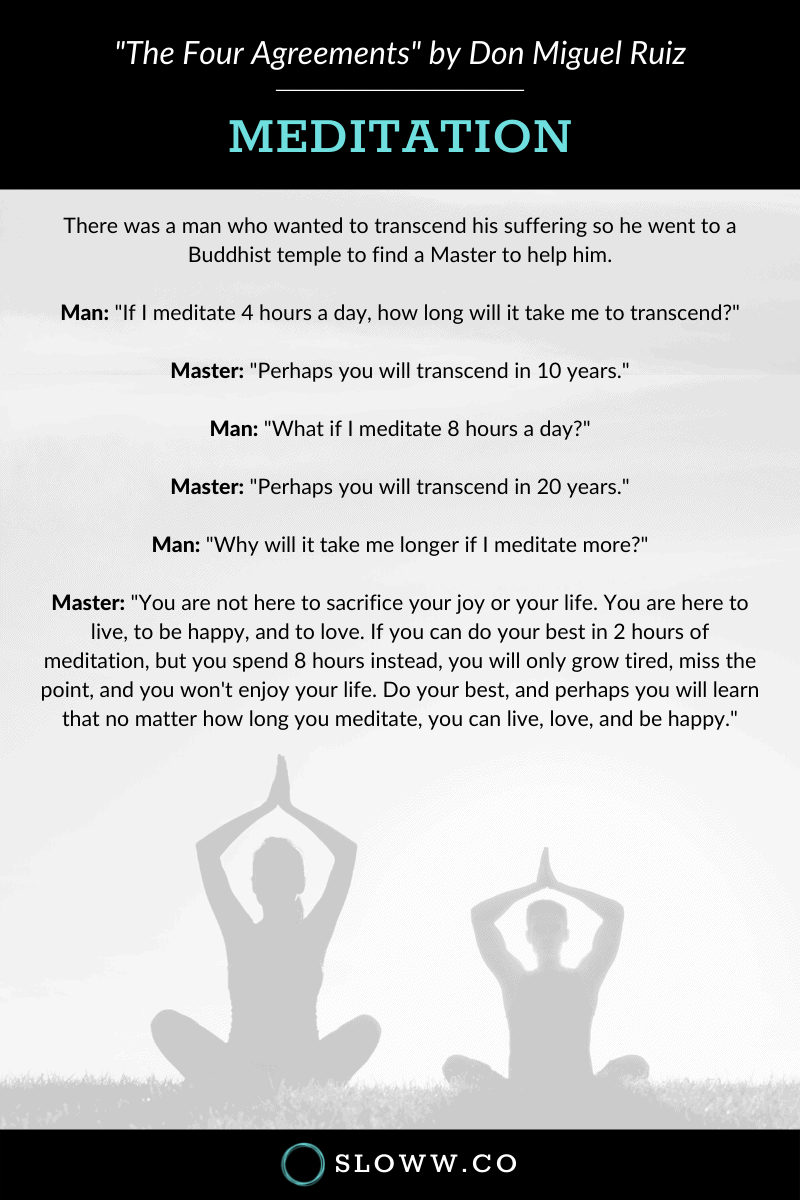Sign up to get the Sloww Sunday newsletter via email for free:👇

Sloww Sunday Newsletter 144 (May 14, 2023) — Money Mastery, Interdisciplinary Learning, Art of Living, & More
Sloww Sunday shares Sloww creations and fascinating curations to 10,000+ students of life. If you enjoy this issue, please help grow Sloww by forwarding the email version of this newsletter to other lifelong learners.
📚 Lifelong Learning
An Interdisciplinary Approach to a Classic Parable
I recently read a couple textbooks for fun (yes, really): Introduction to Interdisciplinary Studies (Book Summary + Infographic) and Interdisciplinary Research (Book Summary + Infographic). I just wrapped up the latter one and also synthesized both books together on how you can be an “interdisciplinarian” (🔒Premium Synthesis).
One of the books mentioned the classic short story of the blind men and the elephant—and why taking an interdisciplinary approach to learning and problem solving is so critical today:
- “Merely examining a behavior or object from different disciplinary perspectives does not by itself constitute interdisciplinary work. Without integration, these different perspectives would lead to mere multidisciplinary work. The reason is illustrated in a poem by American poet John Godfrey Saxe (1816–1887), based on an Indian fable about six blind men and an elephant. Each of the men thoroughly investigated a particular part of the massive beast, and each emphatically concluded that what he had ‘observed’ was very much like a wall (its sides), a spear (its tusk), a snake (its swinging trunk), a tree (its leg), a fan (its ear), and a rope (its tail) … The lesson is that simply having six different experts from six different disciplines examine an object will likely yield at least six different understandings of the object. This is the nature of multidisciplinarity. What is lacking, of course, is any attempt to integrate these conflicting insights, insofar as this is possible, into one composite description or image of the object so as to provide a more comprehensive understanding of it. This understanding is not ‘owned’ by one discipline or insight. We extend this analogy to include a seventh blind person representing the interdisciplinarian who queries the other six about the object. That person then integrates the information provided by the six disciplinarians in an attempt to construct a more comprehensive understanding of the elephant.” — Allen Repko & Rick Szostak (Interdisciplinary Research)
🌎 Lighter Living
3 tips if you feel like you can’t do what you want to do in life “because money”
1. Understand when, where, and why you got your money views in the first place. If you’ve never questioned this, then you are most likely still executing your unconscious socialization and conditioning. Odds are the seeds of your perspectives on (and relationship with) money were planted when you were a child or young adult. Where they came from were influences outside of you like where you were born/grew up, the economic environment of the time period, and how you were raised about money. All of these factors help explain why you view money the way you do. If you are obsessed with money and it’s your #1 priority in life, awareness and understanding of this can help change your relationship with money to one that’s healthier and more positive. For support here, check out posts on The Psychology of Money, Die with Zero, money mind manifesto, truth about the American dream, and lifestyle inflation.
- “The importance that people attached to income at age 18 also anticipated their satisfaction with their income as adults.” — Daniel Kahneman
- “All of us go through life anchored to a set of views about how money works that vary wildly from person to person … People’s lifetime investment decisions are heavily anchored to the experiences they had in their own generation—especially experiences early in their adult life … The economists wrote: ‘Our findings suggest that individual investors’ willingness to bear risk depends on personal history.’ Not intelligence, or education, or sophistication. Just the dumb luck of when and where you were born.” — Morgan Housel
2. Understand how you currently spend money. Track your spending for a year and compare it to the average American. Then track it for a second year and see how much you can intentionally cut. My wife and I cut our annual expenses by 30%! We are essentially a real-life case study for Vicki Robin (co-author of Your Money or Your Life):
- “Once people start to pay attention to the flow of money and stuff in their lives in this way, their consumption drops by about 20-25% naturally because that’s the amount of unconsciousness that you have in your spending. So, when you become conscious, that falls away and many people say they don’t even know what they used to spend their money on.” — Vicki Robin
3. Understand what is possible with money moving forward. Those in the FIRE movement can spend $25-40k/year (some even with families). But, Jacob Lund Fisker of Early Retirement Extreme (Book Summary | 🔒Premium Synthesis) has spent $7k/year for over two decades (same with his wife, so their combined expenses total about $14k/year). While this can seem “extreme” to many, just knowing what is possible with money can help inspire you to change how you spend and save money.
- “I’ve spent between $5-7k/year for more than a decade while living in several different situations: being single and married, living in three different countries, in dorms, apartments and house rentals, in an RV and as a home owner … Spending money mainly serves to resolve friction from inefficient lifestyle design. And for us, there’s just not a whole lot of friction left anymore except real-estate, taxes, and insurance premiums (which account for nearly 60% of our budget). We consider spending money a failure to solve our problems by smarter means.” — Jacob Lund Fisker
Explore more: How do I design a lighter life? (Sloww Stage 1)
🧭 Deeper Purpose
Inspirational Quotes on the Art of Living
I resonate with Henry David Thoreau:
- “Thoreau declined to give up his large ambition of knowledge and action for any narrow craft or profession, aiming at a much more comprehensive calling, the art of living well.” — Ralph Waldo Emerson
Here are some of my favorite art of living quotes that I recently revisited (and here are 25+ more quotes):
- “A master in the art of living draws no sharp distinction between his work and his play, his labour and his leisure, his mind and his body, his education and his recreation. He hardly knows which is which. He simply pursues his vision of excellence through whatever he is doing and leaves others to determine whether he is working or playing. To himself he always seems to be doing both.” — Lawrence Pearsall Jacks
- “The Master holds nothing back from life; therefore he is ready for death, as a man is ready for sleep after a good day’s work.” — Lao Tzu (Tao Te Ching, Stephen Mitchell Version)
- “Just as wood is the material of the carpenter, bronze that of the sculptor, so each individual’s own life is the material in the art of living.” — Epictetus
- “If you make anything more important than the actual living, then, you don’t know the art of living.” — Sri Sri Ravi Shankar
Bonus: 🔒Sloww Sunday #136 outlines what I consider the “ultimate art of living.”
Explore more: How do I find higher purpose (Sloww Stage 2)?
Get the eBook: Ikigai 2.0: A Step-by-Step Guidebook to Finding Life Purpose & Making Money Meaningfully (+ Bonus Workbook)
🧠 Mental Wealth
Why you shouldn’t feel too bad if you’ve lost touch with people
What if losing touch with people over the course of our lives is just a natural consequence of our brain size and physical location? Do Dunbar’s number and the Allen curve explain why?
Dunbar’s Number: As outlined in 🔒Sloww Sunday #069, there’s a connection between brain size and social group size in primates. Based on human brain size, Robin Dunbar hypothesized that human social group size has a natural limit of around 150 people. That may sound like a lot (or a little), but 75% of all your social time is spent with less than 15 of those 150 people!
Allen Curve: In the 1970s, MIT professor Thomas Allen studied how the physical distance between engineers’ offices affected the frequency of communication between them. The “Allen curve” describes a consistent relationship between physical distance and frequency of communication: the rate of people’s interactions declines exponentially with the distance between the spaces where they work. According to Annie Murphy Paul in The Extended Mind (Book Summary), people sitting 6 feet apart are 4x more likely to talk regularly than people seated 65 feet apart. Allen found that 50 meters (about 165 feet) was the cutoff point for regular information exchange (beyond that distance, routine communication effectively ceased).
You may be thinking, “What about phone and internet communication today?” In 2007, Allen examined that question:
- “Rather than finding that the probability of telephone communication increases with distance, as face-to-face probability decays, our data show a decay in the use of all communication media with distance … We do not keep separate sets of people, some of whom we communicate with by one medium and some by another. The more often we see someone face-to-face, the more likely it is that we will also telephone that person or communicate by another medium.” — Thomas Allen
Explore more: How do I master the mind (Sloww Stage 3)
Get Mini Mind: 365 Daily Emails of Bite-Size Brain Food
☯️ Timeless Wisdom
The Main Point of Meditation
Don’t lose sight of the point:
- “One does not practice meditation to become a great meditator. We meditate to wake up and live, to become skilled at the art of living.” — Elizabeth Lesser
The following comes from The Four Agreements by Don Miguel Ruiz (Book Summary | 🔒Premium Summary):

Explore more: How do I embody wisdom (Sloww Stage 4)?
Share: Sloww Sunday currently sends to 10,000+ students of life each week. If you enjoyed this issue, please help grow Sloww by forwarding the email version of this newsletter to some friends and family. It’s free for them to subscribe here.
Support: Sloww is a one-human labor of love (it’s just me over here 👋). Your support keeps the site ad-free and invests in me while you invest in yourself—a true win-win! There are free and financial ways to support.
Speak: Have something you want to say, or just want to say hi? It’s always greatly appreciated. Just reply to this email or reach out socially.
Go with the Sloww,
Kyle Kowalski
Synthesizer & Solopreneur




